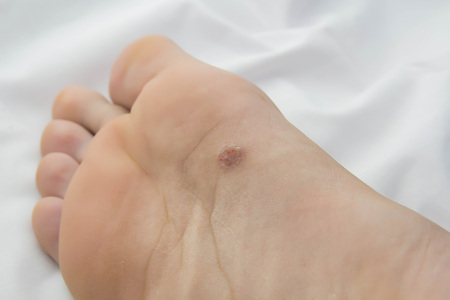Here in Duval County, we’re blessed with sun most of the year, but that also necessitates the need for greater care in protecting the skin on your feet (and the rest of your body). Damaging UV radiation causes 85%-90% of skin cancers. At First Coast Foot Care Specialists we want to share with you an easy way to help identify potentially dangerous moles.
A—Asymmetry—benign moles are more likely to be symmetrical. This means if you were to draw a line down the center of the mole, both sides would look the same. Moles that are asymmetrical are concerning.
B—Borders—melanomas in their early stages tend to have uneven borders. Look for edges that are notched or scalloped.
C—Color—freckles or moles that have a variety of colors and are mottled in appearance could signal danger. Multiple shades of brown, black or tan may be present, or even red, white or blue. Benign moles are usually all one color, usually a single shade of brown.
D—Diameter—a mole that has a diameter of a ¼ inch or 6 mm or more is something that should be examined. This is about the size of the eraser on a pencil.
E—Evolving—any changes in shape, size, elevation or color, or new symptoms within the mole such as bleeding, crusting or itching, indicate a mole that needs to be evaluated by our podiatrists, Dr. Vimal A. Reddy, and Dr. Jeffrey Brimmer immediately.
Get in the habit of examining the skin on your feet and the rest of your body regularly. Check the tops and bottoms of your feet as well as between your toes. It’s always best to err on the side of caution. If you see something that looks suspicious, contact our Jacksonville office for an appointment at 904-739-9129.

Share this article